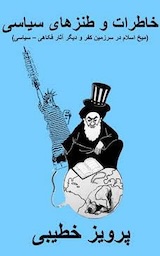The New Yorker:
And Republicans are increasingly attempting to limit that direct-democracy option.
By Peter Slevin
In 1910, Ohio voters went to the polls and called a convention to update the state’s constitution, which had been in place since 1851. It was the Progressive Era, and, two years later, a hundred and nineteen delegates—Republicans, Democrats, and a few Independents and Socialists, representing various professions from across the state—met in Columbus, where they advanced reforms reflecting the egalitarian tendencies of the time. Theodore Roosevelt, who had left the White House three years earlier, delivered a speech, lasting more than an hour, called “A Charter of Democracy,” in which he lamented that many state legislatures “have not been responsive to the popular will.” Their interests were often too narrow, he said, their approaches too often dismissive of the people they were elected to serve. The answer was access to more ballot initiatives, led by citizens, “not to destroy representative government, but to correct it whenever it becomes misrepresentative.”
The delegates drafted forty-two amendments, and, later that year, Ohio voters approved thirty-four of them. One abolished prison contract labor. Others mandated an eight-hour workday on government-funded projects, established a workers’-compensation system, created direct primary elections, and gave more authority to municipalities to run their own affairs. (Of course, only men voted, and one of the amendments they rejected, fifty-seven per cent to forty-three, would have granted women the franchise, eight years before ratification of the Nineteenth Amendment.) Significantly, Amendment 6 established a procedure for citizens to gather signatures to place a constitutional amendment directly on the ballot, avoiding the need for another constitutional convention. The number required was, and remains, ten per cent of the total who voted for governor in the prior election, spread across a certain number of counties. If a simple majority vote in favor, the amendment takes effect: “direct popular action,” as Roosevelt called it, containing reasonable barriers “to prevent its being wantonly or too frequently used.”
Go to link










Comments